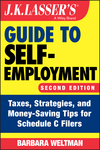3 Things to Know about Your Health Coverage for 2016
Under the Affordable Care Act, every individual must have minimum essential health coverage or face a tax penalty unless eligible for an exemption. Now is the time to get ready for 2016 by checking your health coverage options.
1. Premium tax credit eligibility
Low- and moderate-income taxpayers may be eligible for a federal subsidy to pay for health coverage purchased through a government exchange (the federal marketplace or any state marketplace). The subsidy is in the form of a refundable tax credit, which can be applied on an advanced basis to help cover monthly premiums. Open enrollment for 2016 coverage through government exchanges began on November 1. Visit Healthcare.gov for details.
In general, you qualify for the premium tax credit in 2016 if your household income is between 100% and 400% of the federal poverty line for your family size in 2016. You need to project your 2016 household income. If you over- or understate this amount, you’ll have to make adjustments to the credit you receive on an advance basis when you file your 2016 return in 2017. For example, if you mistakenly overstate your household income to enjoy a larger credit throughout 2016, you’ll repay the excess credit amount as a tax due on your return.
Note: If you claim a credit on an advanced basis or are eligible for one but do not receive it on an advanced basis, you must file a tax return (even if you are under the filing threshold). If you did not file a 2014 return under these circumstances, you may experience difficulty in obtaining the credit on an advanced basis when you enroll for 2016.
2. Medicare
Open enrollment for 2016 Medicare coverage began on October 15; it ends on December 7. If you have coverage in 2015 and like it, you do not have to take any action to continue in the same plan for 2016. However, be sure to check the plans; coverage in continuing plans as well as whether plans are available can change. You may need to make a change.
From a tax perspective, Medicare premiums are tax deductible. This includes premiums for Parts B and D, any additional coverage for Medicare Advantage plans, and supplemental Medicare (“Medigap”) policies. Most Medicare beneficiaries will pay the same Part B premiums of $104.90 per month in 2016 as they did in 2015. Some beneficiaries (e.g., those who are not collecting Social Security) will see a slight increase in their premiums. Individuals who were high-income taxpayers in 2014 (based on modified adjusted gross income) will pay additional Medicare premiums for Parts B and D coverage in 2016.
3. Employer coverage
The tax rules for employer-provided health coverage have not changed. This means you are not taxed on the value of this fringe benefit for you, your spouse, and any dependents. Coverage for domestic partners continues to be taxable to employees.
When you receive your W-2 form for 2015, you may see that coverage is reported (large employers must do this; small employers may choose to do this). The fact that your coverage is on your W-2 does not make the benefit taxable.
Conclusion
If you had health coverage in 2015—your own, through a government program, or an employer—you’ll receive an information return by the end of January 2016.
- Coverage your bought through a government exchange is reported on Form 1095-A
- Coverage from your employer is reported on Form 1095-B or C. For example, if you have employer-provided coverage from a small employer that obtained the coverage through an insurance company, expect to receive Form 1095-B.
- Medicare is reported on Form SSA-1099.
Why is this information important? You must indicate on Form 1040 that you have minimum essential health coverage by checking the appropriate box. Still confused? Talk to a tax advisor.
Coverdell Education Savings Account
A special account set up to fund education expenses of a student.



